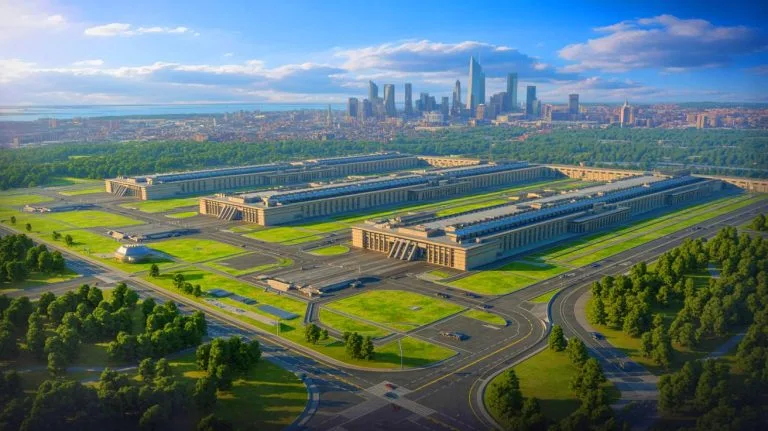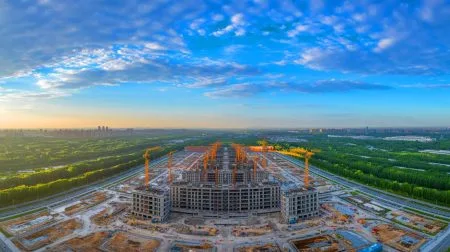| IN A NUTSHELL |
|
The immense scale of China’s new military hub, dubbed the “Beijing Military City,” has captured global attention. Reportedly ten times larger than the Pentagon, this facility is located just 20 miles southwest of Beijing. This development coincides with growing geopolitical tensions between China and the U.S., particularly during the tenure of President Donald Trump. The implications of such a massive military complex—potentially the largest in the world—are profound, especially when considering its strategic purpose as a wartime command center and nuclear bunker. As satellite images continue to reveal the extent of China’s military ambitions, the global community watches with bated breath.
Unveiling the Military Colossus
In recent months, reports have surfaced regarding China’s ambitious construction of a military hub near Beijing. Satellite imagery has played a crucial role in unveiling this project, which experts claim is a staggering ten times the size of the Pentagon. The Pentagon itself occupies 583 acres, making the scale of this new facility nothing short of monumental. The significance of such a vast military establishment cannot be understated, especially given its proximity to the Chinese capital.
While official confirmation from Chinese authorities remains elusive, the evidence presented by satellite images is compelling. The Financial Times first highlighted the complex’s construction in January, providing visuals that suggested a rapid transformation of the landscape. Initially appearing residential, the area north of the Chongqing Reservoir has been cleared to make way for this colossal military base. As these developments unfold, questions about China’s strategic intentions continue to surface.
Strategic Implications and Global Concerns
The construction of this military hub is occurring against a backdrop of heightened geopolitical tensions. Relations between the United States and China have been notably strained, with trade disputes and military posturing becoming more frequent. The Beijing Military City, with its potential role as a wartime command center, adds another layer of complexity to these dynamics. American officials have expressed concerns that this facility could serve as a nuclear bunker, further intensifying the stakes.
Former U.S. intelligence officials and military analysts have weighed in on the potential implications of this development. Some suggest that the new facility could replace China’s existing military headquarters, indicating a significant shift in strategic priorities. The partially buried nature of the complex suggests it is designed with durability and resilience in mind, factors that are crucial in modern warfare scenarios. As the international community grapples with these developments, the potential for escalation remains a pressing concern.
Expert Perspectives and Analysis
Experts have been quick to analyze the implications of China’s military expansion. Renny Babiarz, a former imagery analyst at the National Geospatial-Intelligence Agency, noted that the complex “has all the hallmarks of a sensitive military facility.” This observation underscores the strategic importance of the hub, particularly in the context of China’s military ambitions.
Brady Africk, deputy director of Media Relations and Data Design at the American Enterprise Institute, has shared time-lapse imagery of the site’s construction, providing a visual narrative of the project’s progression. The significance of these developments extends beyond mere physical construction; they represent a tangible manifestation of China’s growing military capabilities and its aspiration to rival the United States on the global stage.
Comparative Analysis: Pentagon vs. Beijing Military City
To grasp the enormity of China’s new military hub, a comparison with the Pentagon is instructive. The Pentagon, a symbol of American military prowess, serves as the headquarters of the United States Department of Defense. It is an iconic structure, known for its unique architecture and historical significance. However, the emerging Beijing Military City, reportedly ten times larger, challenges this status quo.
While the Pentagon’s layout is designed for administrative efficiency and strategic oversight, the Beijing Military City appears to be geared towards operational readiness and resilience. The partially buried structure suggests a focus on protection and sustainability in a conflict scenario. This differentiation underscores the evolving nature of military infrastructure in the 21st century, where size and fortification are paramount.
| Aspect | Pentagon | Beijing Military City |
|---|---|---|
| Location | Arlington, Virginia | Southwest of Beijing |
| Size | 583 acres | 10 times larger |
| Purpose | Administrative Headquarters | Wartime Command Center |
As the world observes the unfolding developments in China’s military strategy, the implications for global security are profound. The Beijing Military City is not just a testament to China’s growing military might, but also a symbol of the shifting geopolitical landscape. As nations navigate these changes, one question looms large: How will the international community respond to China’s expanding military capabilities?
Did you like it? 4.7/5 (21)







